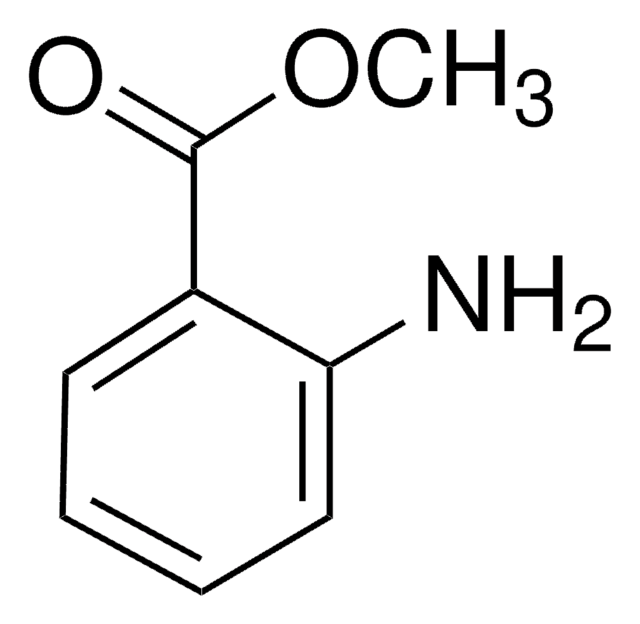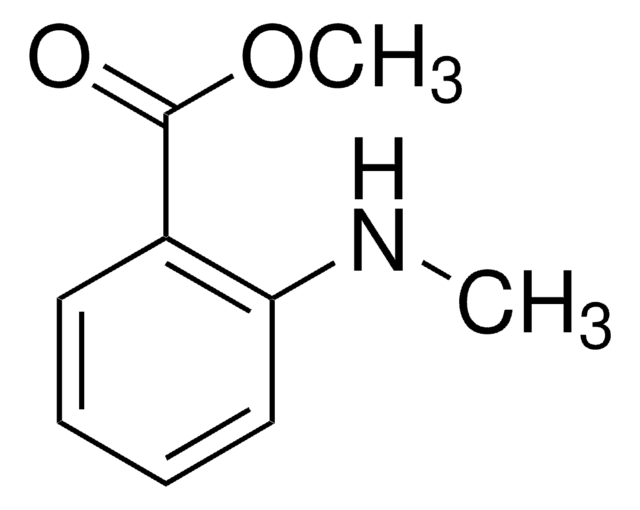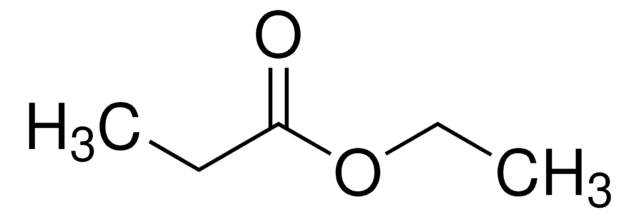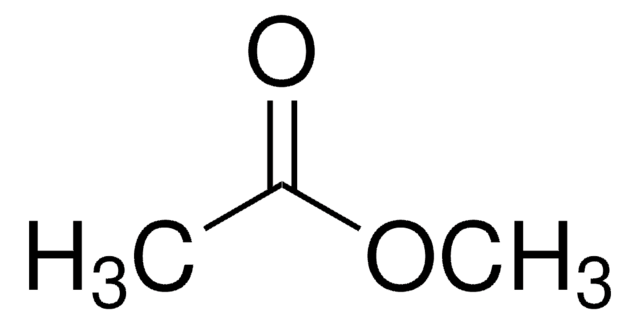W271802
Dimethyl anthranilate
≥97%, FG
Synonyme(s) :
Methyl N-methylanthranilate
About This Item
Produits recommandés
Source biologique
synthetic
Niveau de qualité
Qualité
FG
Kosher
Conformité réglementaire
EU Regulation 1334/2008 & 178/2002
FDA 21 CFR 172.515
Pureté
≥97%
Indice de réfraction
n20/D 1.579 (lit.)
Point d'ébullition
256 °C (lit.)
Pf
17-19 °C (lit.)
Densité
1.126 g/mL at 25 °C (lit.)
Application(s)
flavors and fragrances
Documentation
see Safety & Documentation for available documents
Allergène alimentaire
no known allergens
Propriétés organoleptiques
grape skin; floral; fruity; sweet
Chaîne SMILES
CNc1ccccc1C(=O)OC
InChI
1S/C9H11NO2/c1-10-8-6-4-3-5-7(8)9(11)12-2/h3-6,10H,1-2H3
Clé InChI
GVOWHGSUZUUUDR-UHFFFAOYSA-N
Vous recherchez des produits similaires ? Visite Guide de comparaison des produits
Description générale
Application
- Methyl N,N-dimethylanthranilate and ethyl propionate: repellents effective against spotted wing drosophila, Drosophila suzukii.: This study presents methyl N,N-dimethylanthranilate as an effective repellent, providing insights into potential pest management strategies for protecting crops from Drosophila suzukii, a significant agricultural pest (Conroy et al., 2024).
- Investigation into the characteristic volatile flavor of old duck.: This article discusses the role of dimethyl anthranilate in influencing the volatile flavor profile of aged duck meat, suggesting applications in enhancing food flavors and improving consumer appeal (Duan et al., 2023).
- Effects of Dimethyl Anthranilate-Based Repellents on Behavior, Plumage Condition, Egg Quality, and Performance in Laying Hens.: Research explores the use of dimethyl anthranilate-based repellents in poultry, focusing on their safety and effectiveness in maintaining the health and productivity of laying hens, highlighting its potential in agricultural practices (Terčič et al., 2020).
Mention d'avertissement
Warning
Mentions de danger
Conseils de prudence
Classification des risques
Eye Irrit. 2
Code de la classe de stockage
10 - Combustible liquids
Classe de danger pour l'eau (WGK)
WGK 1
Point d'éclair (°F)
216.7 °F - closed cup
Point d'éclair (°C)
102.6 °C - closed cup
Équipement de protection individuelle
Eyeshields, Gloves, type ABEK (EN14387) respirator filter
Faites votre choix parmi les versions les plus récentes :
Déjà en possession de ce produit ?
Retrouvez la documentation relative aux produits que vous avez récemment achetés dans la Bibliothèque de documents.
Notre équipe de scientifiques dispose d'une expérience dans tous les secteurs de la recherche, notamment en sciences de la vie, science des matériaux, synthèse chimique, chromatographie, analyse et dans de nombreux autres domaines..
Contacter notre Service technique







